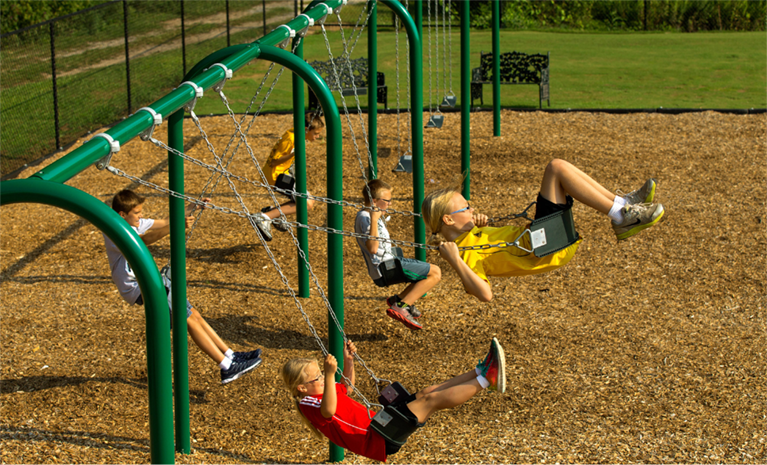
The concept of play is evolving with the demand for more engaging and developmental-friendly environments for young minds and bodies. Traditionally, playgrounds have been places equipped with a standard set of swings, slides, and seesaws, yet contemporary society is witnessing an exciting shift. Playground equipment has transcended beyond these basics, becoming innovative hubs of adventure and learning for children in both community spaces and schools.
The Demand for Modern Playground Solutions
Communities and educational institutions have recognized the need for areas that not merely occupy children but also contribute to their physical, cognitive, and social development. This realization calls for playground installations that are varied, safe, and tailored to children’s growth. The drive for progression in this sector is unmistakable as schools and councils aim to create environments that inspire the young generation while keeping them active and engaged.
Innovative Solutions in Playground Design
As industry standards elevate, playground designers have begun to integrate a multitude of elements into their concepts. These include sensory play panels, interactive equipment, and imaginative structures that encourage children to think outside the box. In these innovative playgrounds, one can find musical instruments, nature play integration, and bespoke climbing frames that challenge the norms of traditional playground design.
The Role of Inclusivity in Playgrounds
An important facet of modern playground development is inclusivity. This trend has led to the creation of spaces that cater to children of all abilities. By incorporating equipment that is accessible to children with disabilities, playgrounds now promote diversity and understanding amongst the youngest members of society. This focus on inclusivity sees the integration of ramps, sensory features, and adaptive swings within new playground landscapes.
Adapting to Urbanisation
Urbanisation has pressed designers to optimize space creatively. The scarcity of expansive areas in city landscapes has given rise to vertically structured playgrounds and ‘pocket parks’. These use inventive spatial design to provide maximal play value within a minimal footprint. The equipment in these spaces must be durable and high-performing to withstand dense populations, which is where quality commercial playground equipment comes into play.
Nature and Technology
Another facet of recent playground trends is blending outdoor play with natural environments. By merging play areas with elements like sand, water, and greenery, children interact with their surroundings in healthy and stimulating ways. Coupled with this is the emergence of smart playgrounds that incorporate modern technology such as augmented reality, which layer digital information over the physical play experience to educate and entertain simultaneously.
Playground Safety
Safety continues to be paramount, with contemporary equipment being subject to rigorous safety standards. Innovations in materials have lead to softer landing surfaces, more secure fastenings, and weather-resistant components, ensuring that children can explore safely. The development of these new materials has paved the way for more intricate designs in playground equipment while maintaining the necessary safety precautions.
Collaboration for Better Play Spaces
Developing these advanced play spaces also involves collaboration—between manufacturers, urban planners, schools, and communities. Stakeholders often converge to identify the unique needs of the children who will be using the playgrounds. This often results in tailored playgrounds that encapsulate the ethos of the surrounding community or the educational goals of a school.
Case Studies and Evidence-Based Design
When planning for new playground equipment, decision-makers are increasingly considering evidence-based design. Research into child development supports the idea that play is critical to learning and growth. Utilizing case studies of successful frameworks and environments, schools and cities are investing in playgrounds that are grounded in educational philosophy and psychological insight.
Grants and Funding for Playground Projects
Funding these dream playgrounds has grown more accessible through government grants, sponsorships, and community fundraising efforts. These financial resources enable schools and communities to invest in higher-quality playground installations that offer greater longevity and developmental benefits for children.
Impact on Learning and Community Engagement
Playgrounds are becoming more than just places to play—they are now becoming central to communities as focal points for socializing, learning, and exercising. In schools, playgrounds equipped with innovative school playground equipment support curricula by offering outdoor classrooms and interactive learning stations.
Towards Sustainable Play Environments
Environmental sustainability is also a critical component of modern playgrounds. Eco-conscious materials are chosen to have a lower environmental impact, and designs often promote an appreciation for nature. Green initiatives within playground projects mirror society’s growing emphasis on conservation and sustainability.
Conclusion
Elevating play spaces to meet the evolving needs of an active, diverse, and ever-growing youthful population is instrumental in shaping a brighter future. Innovations in playground equipment enable communities and schools to foster environments where children can learn, grow, and thrive. With every piece of equipment that is wisely chosen and every play space thoughtfully designed, society takes a significant step towards enriching the lives of its youngest members.




